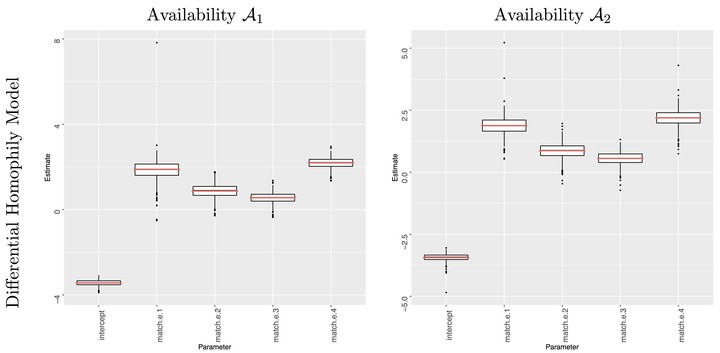
Abstract
Many problems in the social sciences require models for partnership formation that separate latent preferences for partners from the availability of partners. We consider a model for matchings within a bipartite population where individuals have utility for people based on known and latent characteristics. People can form a partnership or remain unpartnered. The model represents both the availability of potential partners of different types and preferences of individuals for such people.
We present methodology to estimate preference parameters based on sample survey data on partnerships and population composition. We report simulation studies based on new marriages observed in the Survey for Income and Program Participation (SIPP) to show that, for realistic population sizes, the model recovers preference parameters that are invariant under different population availabilities. We also present a method for bias correction of parameters for small population sizes and confidence intervals for estimates that have correct coverage. This model can be applied in family demography to understand individual preferences given different availabilities.
This is joint work with Shuchi Goyal, Michael S. Rendall, and Heide M. Jackson.